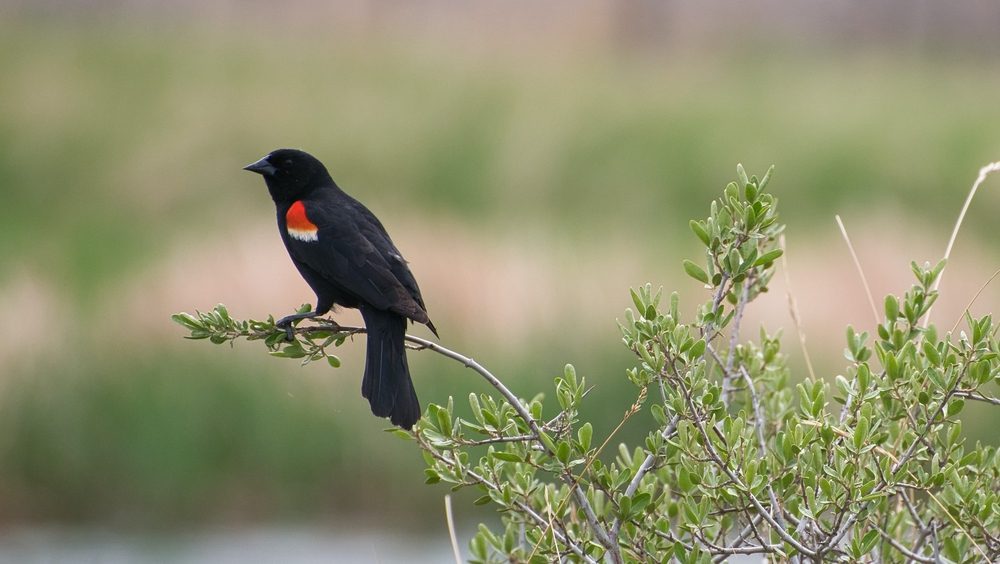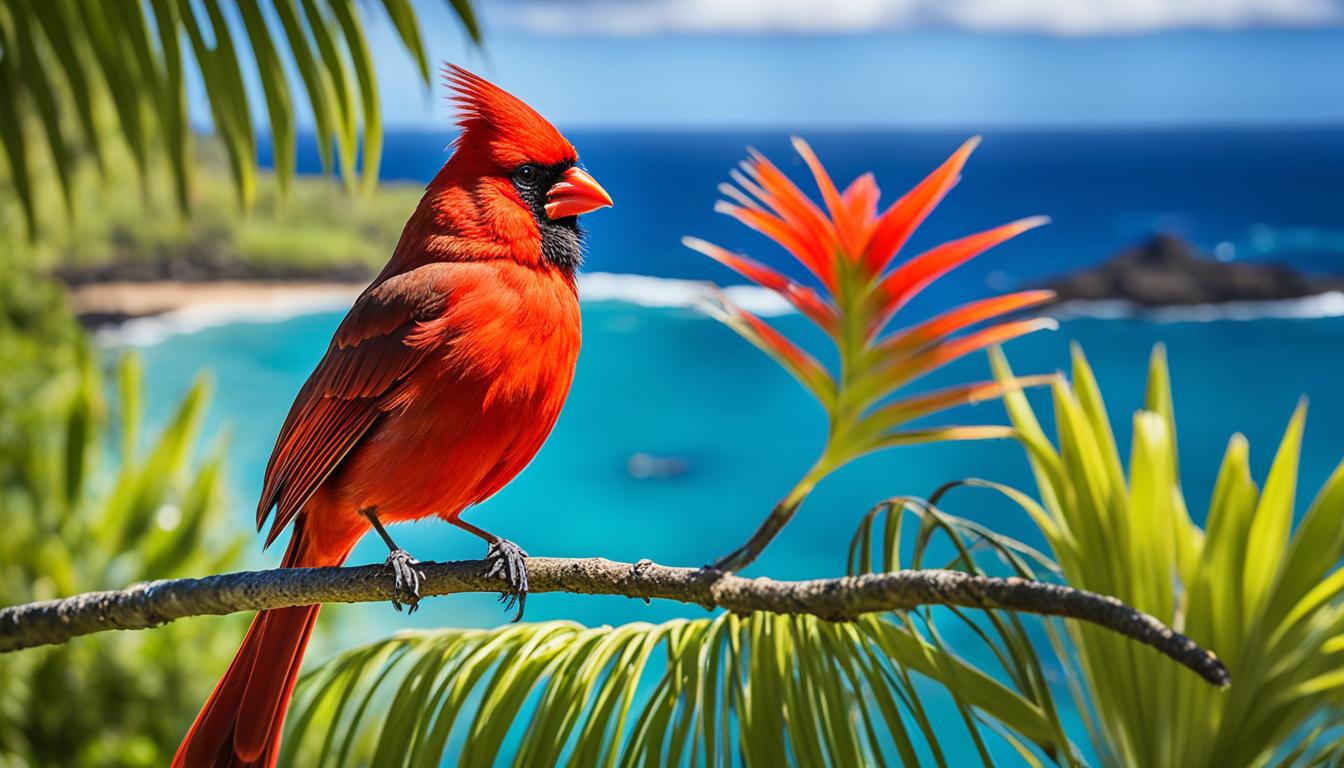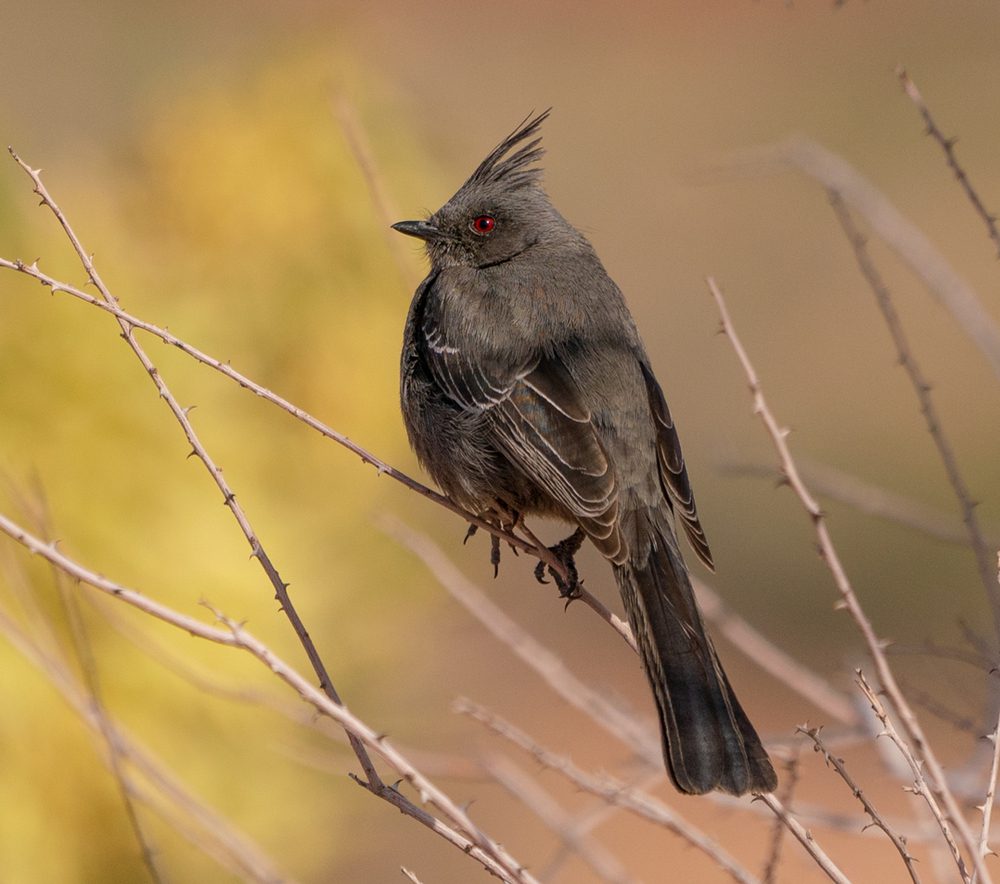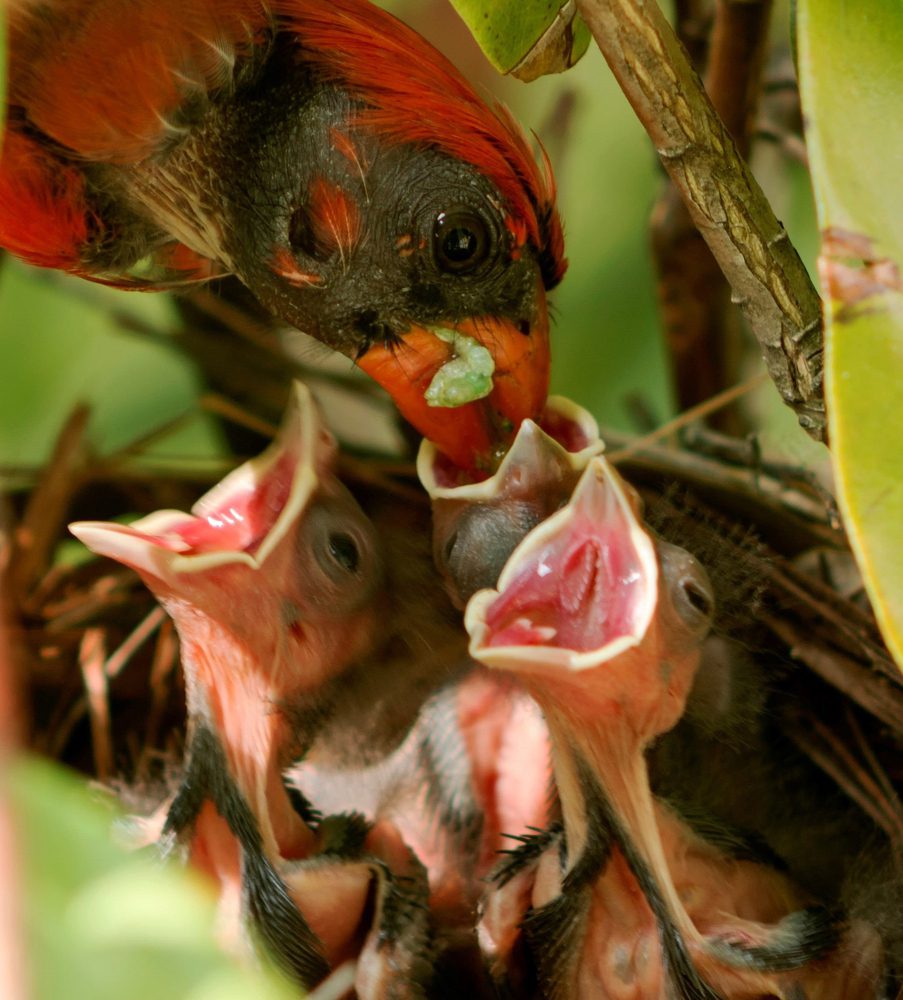Florida is home to a stunning array of bird species, from vibrantly colored songbirds to majestic birds of prey. Among this avian diversity, black birds hold a special allure. Their dark plumage seems to absorb light, creating a visual drama amidst the lush Florida landscapes. Understanding and appreciating the presence of black birds in Florida’s ecosystems creates deeper connections with the natural world.
This blog post will explore the captivating variety of black birds found in the Sunshine State. We’ll identify key species and their distinguishing features, helping readers recognize these birds as they encounter them in marshes, forests, and backyards. The ecological roles and cultural significance of black birds will also be spotlighted, shedding light on their interconnectedness with Florida environments and human communities over time.
From grackles and blackbirds to the iconic Anhinga water bird, black birds demonstrate the richness of Florida’s avifauna. As we uncover details about each species, we will better understand the state’s ecosystems and how we can support black bird populations through conservation. Join us as we embrace the magic of black birds in Florida!
Table of Contents
Identifying Black Birds in Florida
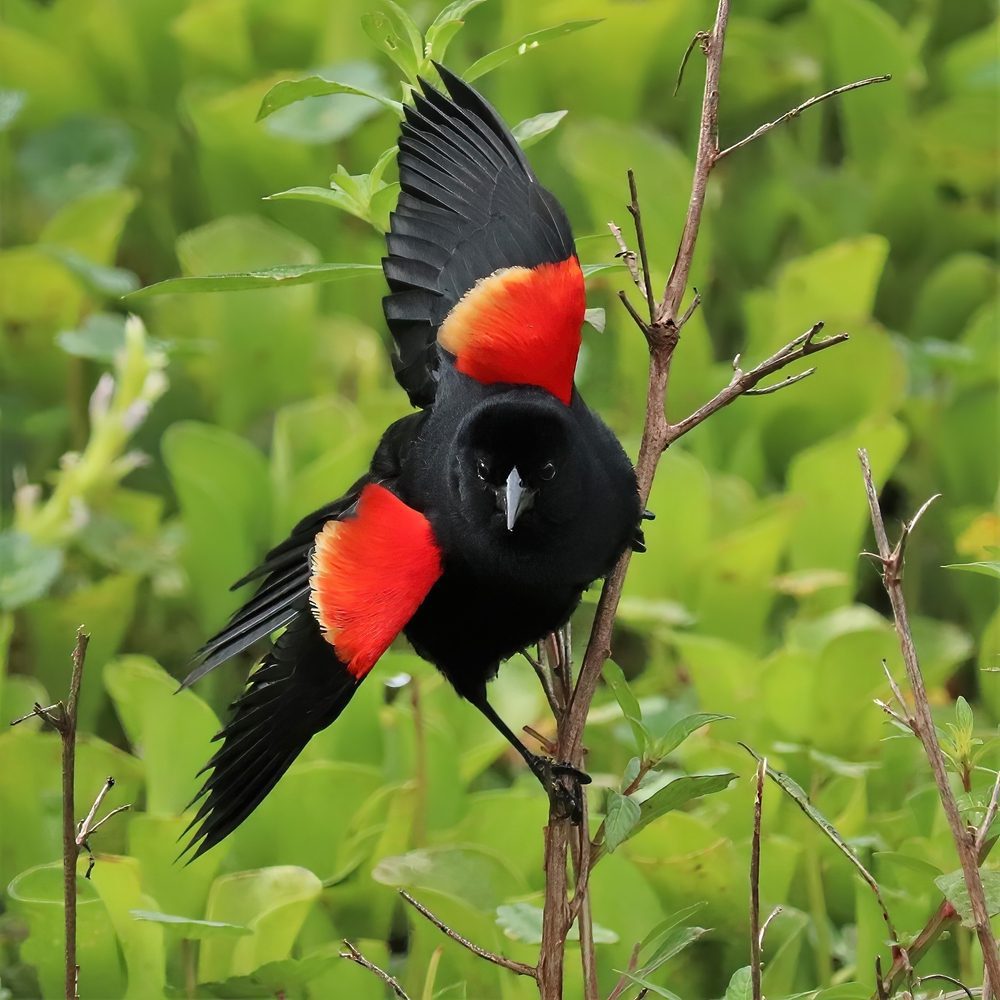
Florida is home to a diverse array of striking black birds. Some of the most commonly seen black birds in the state include the Common Grackle, Boat-tailed Grackle, Red-winged Blackbird, and the unique Anhinga.
Red-winged Blackbird
One of the most familiar black birds in North America, male Red-winged Blackbirds are jet black with red and yellow shoulder patches. Females are streaky brown. Red-wings are vocal birds, with males defending their territories in marshes by belting out their distinctive call, described as “kon-ka-reee.”
Common Grackle
The Common Grackle is a large, lanky songbird with glossy black feathers covering its entire body. Males have a distinctive purple-blue iridescent sheen on their heads and necks. These noisy and gregarious birds travel in large flocks and can often be spotted strutting across lawns or perched in trees. Listen for their harsh, squeaky calls as they fly by.
Boat-tailed Grackle
Slightly smaller than the Common Grackle, the Boat-tailed Grackle can be identified by its long, keel-shaped tail and yellow eyes. Males sport black feathers while females are brown. Look for these birds probing the mudflats of coastal marshes or wading in shallow waters in search of small fish, frogs, and crustaceans.
Anhinga
Also known as the Snakebird or Water Turkey, the Anhinga is a striking waterbird with blackish-brown plumage and a long, snakelike neck. These birds swim low in the water with only their neck exposed, then perch with wings spread wide to dry. Anhingas can be spotted spearing fish in freshwater lakes, ponds, and slow-moving rivers.
Accurately identifying black birds takes patience and practice. Investing time to observe key field marks like size, shape, wing patterns, tail shape, beak shape, feather colors, and behavior will help bird enthusiasts reliably distinguish between species. Understanding the sounds black birds make is also invaluable. Resources like field guides and mobile apps can further support the identification process.
Learning to identify Florida’s black birds enriches birdwatching adventures and also promotes wider ecological awareness. Putting names to the birds gracing Florida’s diverse habitats connects us more deeply to the natural environments we share.
Ecological Significance of Black Birds
Black birds play vital ecological roles in Florida’s diverse ecosystems, from expansive wetlands to bustling urban areas. Their foraging behaviors help regulate insect populations while their nesting habits provide shelter for other species. Understanding the interconnected nature of black birds and their environments underscores the need for conservation efforts.
Foraging Behaviors
Many black birds in Florida exhibit generalist foraging behaviors, meaning they feed on a wide variety of prey. Red-winged blackbirds probe mudflats for insects and snails. Boat-tailed grackles rummage through grassy areas gobbling up grasshoppers. Common grackles scout sidewalks and parking lots for bits of discarded food. Anhingas spear fish with their sharp beaks. These adaptive feeding strategies allow black birds to thrive across habitats.
Nesting Habits
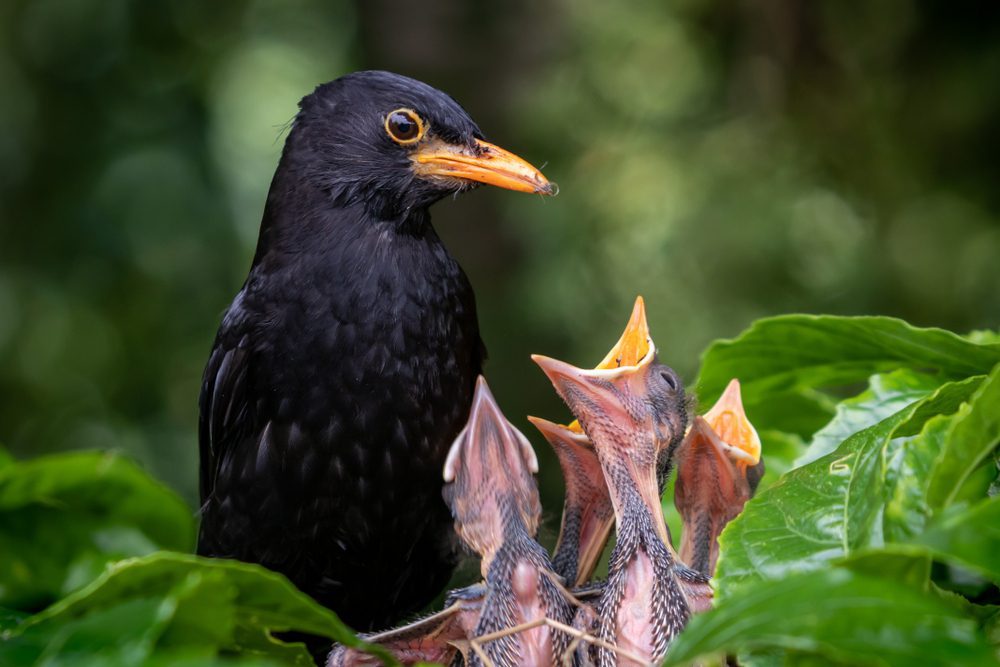
The nesting habits of black birds directly impact local ecosystems. Many species build nests in marsh grasses, creating shelter and resources for other wetland creatures. Boat-tailed grackles construct elaborate pendulous nests hosting entire micro-ecosystems of insects and plants. Red-winged blackbirds nest in cattails, dispersing seeds that spur wetland growth. Even urban nesters like common grackles support biodiversity via nutrient cycling and seed dispersal in built areas.
Species Interactions
Black birds interact with a variety of species throughout Florida. Groups of noisy grackles mobbing a great blue heron may limit its foraging success. Flocks of red-winged blackbirds nesting near alligators gain protection from egg-eating predators. Anhinga wings spread to dry after fishing provide shady roosting spots for egrets and ibises. These complex interrelationships showcase how black birds both influence and are influenced by other members of their ecosystems.
Conservation Need
Understanding black birds’ integral connections with Florida’s habitats underscores the need for conservation efforts. Protecting wetlands supports nesting red-winged blackbirds which in turn bolsters wetland health. Monitoring urban grackle populations indicates the wellbeing of city ecosystems. Promoting biodiversity allows black birds to fill their ecological niches. Through habitat preservation partnerships and citizen science initiatives, we can ensure the future balance of ecosystems where enchanting black birds thrive.
Cultural and Historical Perspectives
Black birds have long captured the imagination in Florida, appearing in local legends, art, and cultural traditions. Indigenous tribes revered certain dark-plumed species, incorporating them into ceremonial dances and mythological stories. The Anhinga, or “snake bird,” features prominently in Seminole and Timucua folklore as a shape-shifting trickster and messenger from the spirit world.
Prominence in Folklore and Oral Histories
Early Spanish accounts described native tribes adorning themselves with black bird feathers and viewing the gracefulness of these avians as the embodiment of beauty. The Common Grackle’s irridescent sheen earned it a reputation as a sign of good fortune. Red-winged Blackbirds dotted Seminole clothing and tribal storytelling, their distinctive epaulets inspiring tales of courage. From mystical tales to lighthearted fables, black birds animated Florida’s oral history traditions.
Artistic and Literary Symbolism
Many writers and artists found inspiration in Florida’s dark-plumed avians. Their cryptic coloration and aloof behaviors shrouded them in an air of mystery. Some early naturalists portrayed black birds like the Boat-tailed Grackle as harbingers of tempestuous weather in line with old maritime superstitions. The Anhinga’s snake-like neck and dagger-like beak manifest in sinister imagery. But others celebrated black birds for their resilience and adaptability, depicting them as icons of the region’s sultry wilderness.
Living Links to Bygone Eras
Today, black birds remain integral components of Florida’s habitats, serving as living links to bygone eras. Much like the first human inhabitants and early explorers who gazed upon these dark-feathered creatures with awe and admiration, present-day observers can still find magic in their presence. Understanding the cultural and historical perspectives behind black birds allows us to appreciate the timeless wonder they evoke in this region.
Conservation Efforts and Citizen Science
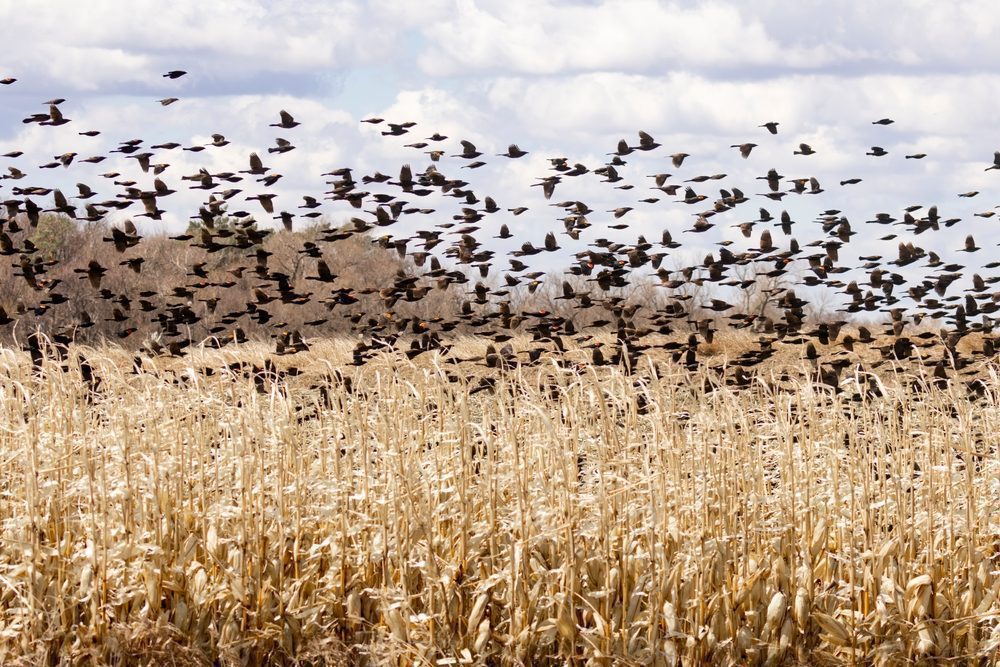
Florida is home to a diverse array of black birds, from the glossy plumage of the Anhinga to the raucous calls of the Red-winged Blackbird. These captivating species play vital roles in local ecosystems, yet many face threats from habitat loss, climate change, and other environmental pressures. Thankfully, concerted conservation efforts are helping protect black bird populations across the state.
Safeguarding Crucial Habitats
Groups like Audubon Florida are preserving wetlands, forests, and other habitats that provide black birds with the resources they need to thrive. Securing nesting sites, food sources, and migration pathways enables stable community structures to persist. Audubon also monitors bird populations to detect concerning trends and determine where intervention may be needed. Their research helps guide habitat restoration projects in areas of particular ecological importance for black birds.
Citizen Science for Collective Impact
Individual citizens can directly contribute to black bird conservation through community science initiatives. The Florida Fish and Wildlife Conservation Commission’s EagleWatch program enlists volunteers to track bald eagle nest locations and breeding productivity. The data collected provides insights into habitat suitability, trends over time, and how human activity influences these iconic raptors. Another project called NestWatch lets participants submit observations of all bird nesting activity, including black bird species. By crowdsourcing data, researchers can analyze broader patterns and users become more attentive to avian ecology in their neighborhoods.
Taking Personal Action
Simple personal actions can also make a difference for black bird conservation. Installing bird feeders, nest boxes, and bird-friendly native plants helps provide food, shelter, and nesting sites. Reducing pesticide usage, keeping cats indoors, and disposing of trash properly protects birds from toxins, predators, and hazardous debris. Volunteering with habitat restoration efforts gives hands-on experience improving local environmental conditions. Every small contribution adds up when many residents commit to stewarding nature in their communities.
From large-scale habitat management to citizen science programs to individual actions, collective efforts are needed to ensure the longevity of Florida’s black birds. Readers can embrace their role as environmental stewards by connecting with conservation initiatives happening across the state.
Embracing the Magic of Black Birds
Florida’s black birds are a captivating and diverse group. From the iridescent feathers of the Common Grackle to the snake-like neck of the Anhinga, these birds showcase the magic of nature. Connecting with them through birdwatching allows us to appreciate their beauty and better understand their ecological roles.
To preserve these enchanting species for future generations, increased awareness, appreciation, and conservation efforts are vital. As Florida’s landscapes continue to be altered, proactive habitat protection is essential for vulnerable bird populations. Citizen science projects allow everyday people to participate in monitoring programs.
Summarize the diversity and value of black birds
Florida is home to a striking variety of black-colored birds that contribute uniquely to local ecosystems. Observing them facilitates meaningful connections with the natural world. As appealing parts of Florida’s biodiversity, black birds warrant our attention and care.
Emphasize awareness, appreciation and conservation
Ongoing habitat loss necessitates action to safeguard black birds. Outreach initiatives must nurture public interest, while habitat restoration projects preserve vital nesting and foraging grounds. Appreciating black birds motivates participation in conservation.
Embark on your own black bird sightings. Record observations to contribute data to monitoring efforts, or contact local wildlife organizations to volunteer. Spread the word about these remarkable species to inspire others. Even small actions can positively impact black bird conservation.

